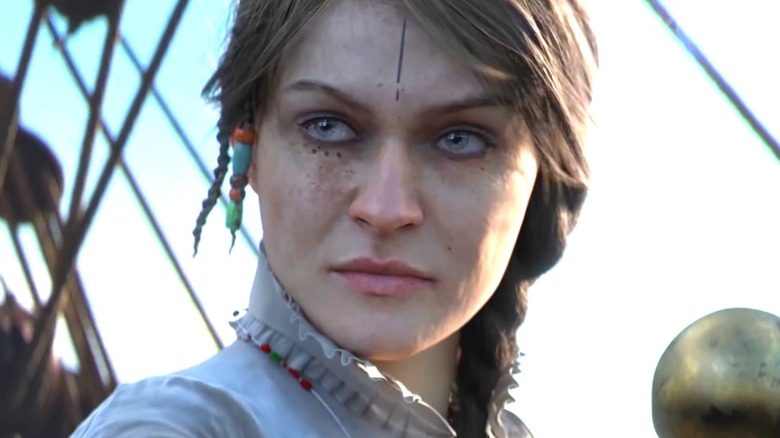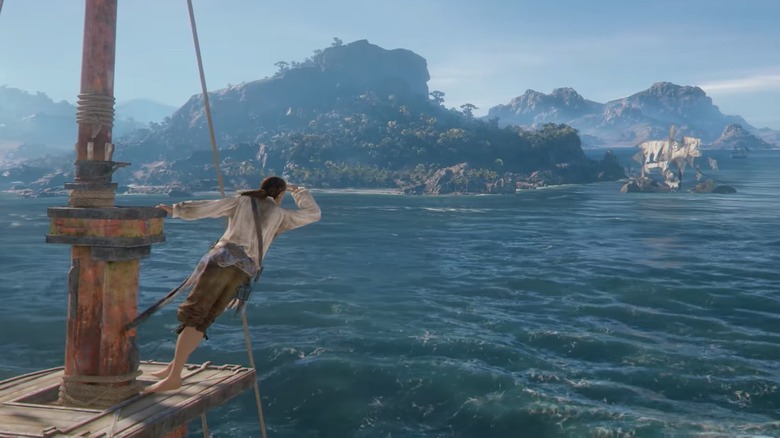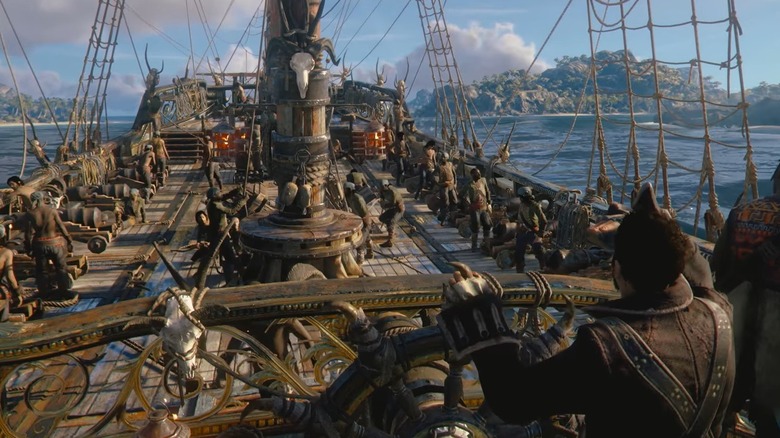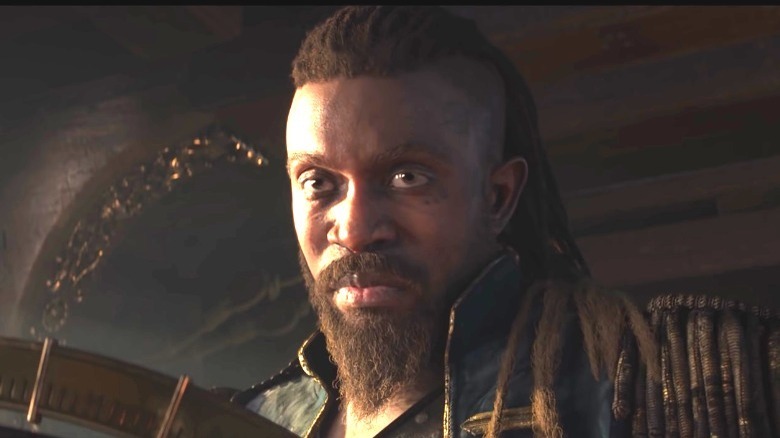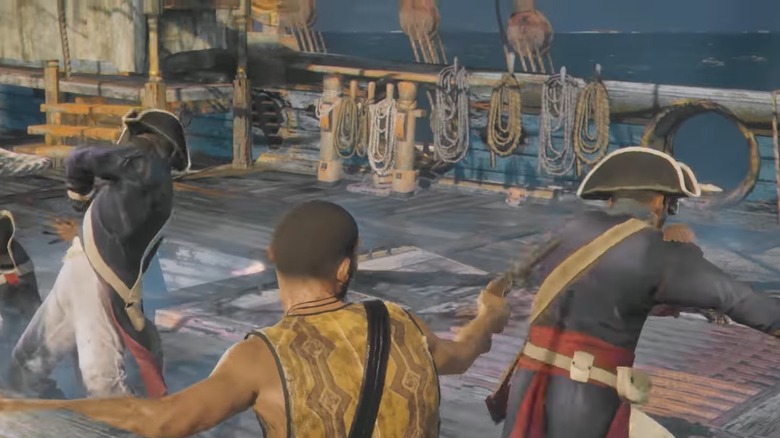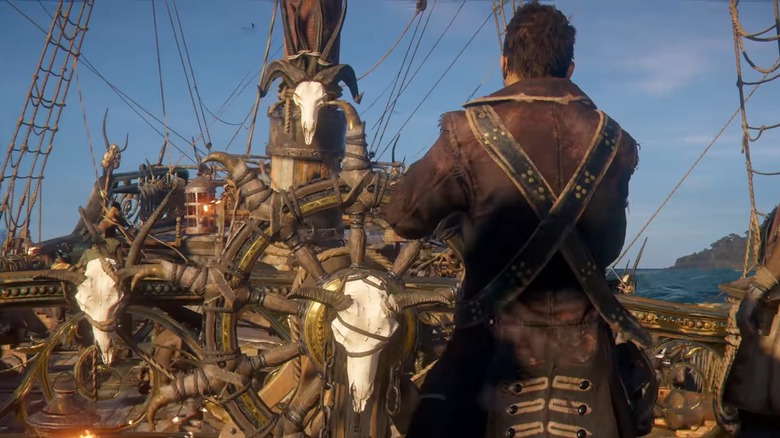Why Ubisoft Won't Release Skull & Bones
Developing a AAA game based on a new IP takes years, and no development cycle goes perfectly, with great-sounding ideas needing to be revamped while studios try to deliver something special. Developers and gamers know this, so both sides try to manage expectations while they wait for the next big thing to arrive
Sometimes, however, the best-laid plans go awry, as has become the case with the long-gestating "Skull & Bones," a pirate adventure game that will be the first significant original IP released from Ubisoft Singapore. The project was officially announced at E3 2017, and a series of developer interviews presented during its unveiling established a connection to 2013's "Assassin's Creed: Black Flag," which was celebrated for its ship-to-ship combat mechanics.
That timeline told fans that "Skull & Bones" had already been in development, in one form or another, for up to four years, making the expected 2018 release date seem well within reach. However, the title would miss that deadline and many more. Now, more than four years have passed since the game was revealed in 2017, and a new Kotaku exposé makes it seem like the project is still far out on the horizon. Here is everything fans need to know about the troubled development cycle of "Skull & Bones" and why Ubisoft won't be releasing it anytime soon.
Skull & Bones began life as an Assassin's Creed spin-off that got out of control
To understand the saga of "Skull & Bones" and its delays, fans need to know a little about its developer, Ubisoft Singapore. The studio got its start in 2008 when it developed "Teenage Mutant Ninja Turtles: Turtles in Time Re-Shelled," a remake of the classic side-scroller, per Delisted Games.
However, Ubisoft Singapore rose to prominence within its parent company when it contributed to "Assassin's Creed: Black Flag," an experience that helped establish the studio "as proud innovators of naval gameplay and water technology," according to the official website. As reported by Kotaku, the basic concept for the game that would become "Skull & Bones" was to take the naval combat from "Assassin's Creed: Black Flag" and combine it with the live service model of "Ghost Recon Phantoms," a free-to-play multiplayer title the studio maintained.
That project would be briefly known as "Black Flag Infinite." To achieve a fast turnaround, the studio planned to reuse assets from "Assassin's Creed: Black Flag'" However, that project got off the ground in late 2013, right as the Xbox One and PlayStation 4 launched, quickly making some of those assets outdated. As the timeline stretched out, the developer's ambitions for graphics and gameplay grew, eventually earning its own codename while developing its unique set of challenges.
Black Flag Infinite becomes Project Liberté
As "Black Flag Infinite" grew in scope, it soon took own its own working title, "Project Liberté," and began positioning itself as the debut original IP for Ubisoft Singapore, according to Kotaku.
However, the further "Project Liberté" moved away from the "Assassin's Creed" franchise, the more unfocused it became. Kotaku interviewed developers on the project, who listed some of the game's various redirections. What started as a fairly standard, lightly historical pirate adventure set in the Caribbean soon moved to a fantasy world called Hyperborea. Next, the developers built a pirate world centered around a floating cathedral called Libertalia before the setting would eventually move to the Indian Ocean.
The Indian Ocean was still the location when "Skull and Bones" was revealed at E3 2017, where former creative director Justin Farren described it as a "shared systemic world" that players could explore solo or in groups. However, despite the impressive-looking pre-alpha gameplay footage shown in the reveal and the promised 2018 release date, the game was far from finished, as the next several years of development would demonstrate.
Conflicting design approaches kept Skull & Bones from making meaningful progress
While the developer eventually settled on a backdrop for its pirate adventure, Kotaku reported that the team could not agree on what kind of game "Skull & Bones" would be. When it was demonstrated at E3 2017, some of the open-world concepts had been scaled back to better accommodate a session-based experience inspired by "Rainbow Six: Siege."
By the time the game returned for E3 2018, some of those free roam elements had returned in the "Hunting Grounds" mode, in which players could look for loot, engage in PVP, or team up to take on PVE challenges. This mode, according to Kotaku, may have been inspired by "The Division," which featured similar "Dark Zones," but Ubisoft Singapore soon scrapped this approach in favor of one that took cues from open-world survival games like "Rust" or "Ark: Survival Evolved." Systems such as resource management and trading were implemented, although the developers reported difficulties making these elements function with the game's existing engine.
The switch to a survival and exploration format wouldn't be the last pivot for "Skull & Bones." Current and former developers told Kotaku that the game's present build had taken a new approach, and few are confident what the finished product will look like — if it ever arrives.
Alleged mismanagement and a difficult work environment may have stalled Skull & Bones for years
What was the root issue that caused the constant shift in focus and kept "Skull & Bones" in development for the better part of a decade? While Kotaku's interviews with developers didn't pinpoint a single factor as the issue that delayed the game, many of the problems seem to be related to chronic mismanagement from upper echelons of leadership.
Fundamental gameplay decisions, such as whether the player would experience the game primarily as a pirate player character or as a pirate ship, were left without a definitive answer. When settings, backdrops, and gameplay approaches changed, the team would circle around to explore design documents that had been drafted and discarded years prior.
The lack of a clear direction for the game was reflected in Ubisoft Singapore's confusing hierarchy. "Skull & Bones" has now burned through three creative directors. Kotaku reported that the project was first under Sebastien Puel, although by the time it debuted at E3 2017, Justin Farren had taken over, per IGN. However, in late 2020, an Ubisoft blog post introduced Elisabeth Pellen as the new creative director, who announced that production was "in full swing with a new vision."
Each of these changes, alongside a 2020 sexual harassment scandal that never got any better for Ubisoft, led to massive restructuring that would periodically replace critical personnel throughout Ubisoft Singapore and hinder forward progress on "Skull & Bones."
Assassin's Creed Infinite comes full circle as Skull & Bones' future remains uncertain
"Skull & Bones" has now been in production for eight years and its development has been delayed for an entire generation of consoles. Three different sources told Kotaku that the estimated amount of money spent on the project so far is higher than $120 million.
Meanwhile, in July 2021, Ubisoft announced a new game with a familiar working title. Bloomberg reported that the next entry in the franchise that was the origin point for "Skull & Bones" would be a live service game and was currently in development under the codename "Assassin's Creed Infinity." While details on that planned follow-up are scant, its live service model could make it an in-house competitor to "Skull & Bones," depending on the final release timetable for both titles.
So, when might gamers see the pirate adventure finally make it to shore? The last official communication from Ubisoft came from a press release posted on Globe News Wire, which read, "Skull and Bones will now be released in 2022-23." While that remains a pretty broad window, it is worth noting that if the project does slip into 2023, ten calendar years will have passed since "Skull & Bones" first got off the ground.

